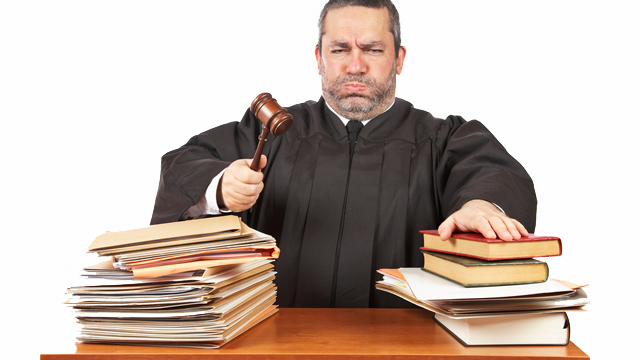
Life would be so much easier if all we had to focus on was dropping creative awesomeness on the world, wouldn?t it? Alas, such is the life of a freelance designer?the wearer of many hats.
Today?s hat is boring. You?re going to want to gloss over it, skim it briefly and hope the next GDB post is more entertaining.
But you really, REALLY, shouldn?t, because today?s post could save you a huge headache.
I?m talking brain-splitting migraine ? failing to adhere to legal standards could result in serious troubles like lawsuits and hefty fines for you and your clients.
So to help you understand the nuances of the US copyright laws, I?ve demystified two must-know legal concepts. (Sorry, international readers. Please let us know in the comments how these laws and regulations apply in your country.)
Fair Use
A limitation and exception to the exclusive right granted by copyright law to the author of a creative work, based on four factors:
- The purpose and character of the use, including whether such use is of a commercial nature or is for nonprofit educational purposes;
- the nature of the copyrighted work;
- the amount and substantiality of the portion used in relation to the copyrighted work as a whole; and
- the effect of the use upon the potential market for or value of the copyrighted work.(17 U.S.C. ? 107)
In layman?s terms: The use of copyrighted work in a legal manner, based on four factors:
- The reason you?re using the copyrighted work, especially if you?ll profit from it;
- the copyrighted work itself;
- how much of the copyrighted work you use; and
- if your use of the copyrighted work may devalue it.
Generally accepted uses of fair use include criticizing or commenting on a particular work, a news report, non-profit educational tools and research, and parodies.
Famous Example: Everybody remembers the Obama ?Hope? poster, right?
Quick recap: The poster designer used an AP copyrighted photograph as a basis for the illustration and a lawsuit ensued (mostly because the poster made a lot of money).
Eventually, they settled out of court, but it?s important to know that the court suggested the AP would win the case.
For a more in-depth discussion on fair use, check out these sources:
Work (Made) for Hire
Often abbreviated WFH, a work created by an employee as part of his or her job, or a work created on behalf of a client where all parties agree in writing to the WFH designation. If a work is made for hire, the employer ? not the creator ? is the legal author of the work.
The US law designates work for hire as:
- a work prepared by an employee within the scope of his or her employment; or
- a work specially ordered or commissioned for use as a contribution to a collective work, as a part of a motion picture or other audiovisual work, as a translation, as a supplementary work, as a compilation, as an instructional text, as a test, as answer material for a test, or as an atlas, if the parties expressly agree in a written instrument signed by them that the work shall be considered a work made for hire.(17 U.S.C. ? 101)
In layman?s terms: As an employee, your employer is the legal author of all of your work. As a freelancer, your client is the legal author of your work IF the following conditions are met:
- the work must come within one of the nine limited categories of works listed in the definition above, namely (1) a contribution to a collective work, (2) a part of a motion picture or other audiovisual work, (3) a translation, (4) a supplementary work, (5) a compilation, (6) an instructional text, (7) a test, (8) answer material for a test, (9) an atlas;
- the work must be specially ordered or commissioned;
- there must be a written agreement between the parties specifying that the work is a work made for hire. Note that a mutual agreement isn?t enough?it has to specifically be written that the work you?re going to do is ?work for hire? or ?work made for hire? in the contract. You DO have a contract, right?!
Example: Who owns the artwork and files you, as a freelance designer, used to create a brochure for your client? Under US copyright law, you own the files and artwork while the client owns the finished product (the brochure).
So what if your client asks for the design files? That?s a stickier situation, and should cost them more than just the final product as a whole if you choose to relinquish them.
For more information on work made for hire, read these great articles:
Enough legalese for one day!
There?s really a ton more to cover in regards to legal terms freelancers should know, but just these two are enough to digest for one post.
What other legal terms should we cover here at GDB?
Have you ever had any legal issues stemming from fair use or work made for hire?
Leave a comment and join the discussion!
the secret life of bees full moon aubrey o day masters live johan santana viktor bout ncaa hockey
No comments:
Post a Comment
Note: Only a member of this blog may post a comment.